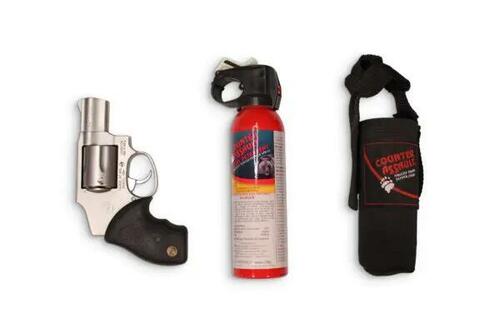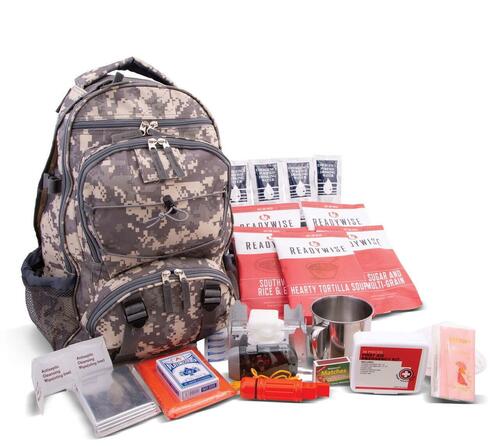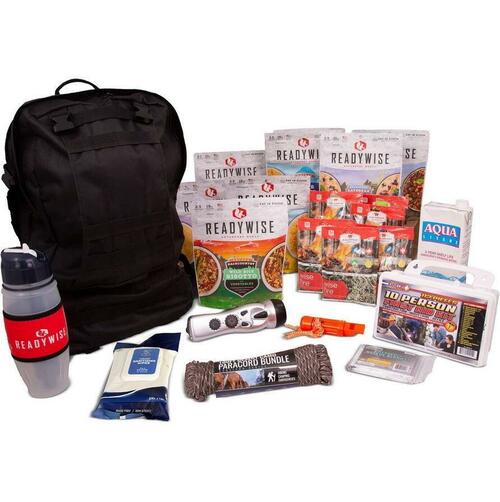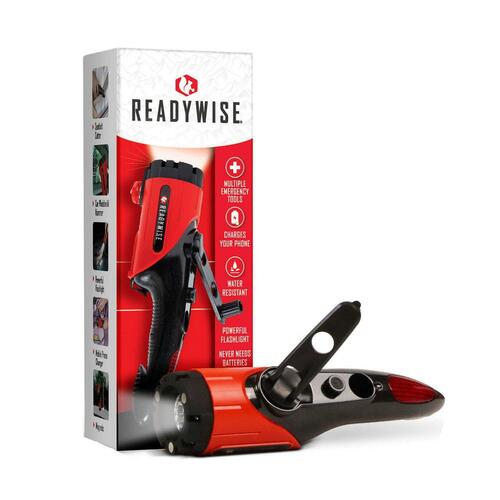Authored by Emma Suttie D.Ac, AP via The Epoch Times (emphasis ours),
It’s the middle of the night. You wake from a deep sleep and smell smoke. When you come to, you see flames in the next room and realize your house is on fire.
This is just one of many scenarios that can happen—at any time—to anyone. You may need to act in an instant, and having a bug-out bag prepared can help you mitigate the challenges emergencies present and ensure you have what you need to survive during—and after—the emergency.
Bug-Out Bags Defined
Bug-out bags go by many different names:
These kits equip you with essential tools and supplies to handle a variety of emergencies and disasters. Backpacks are typically used for portability, which becomes crucial if you need to evacuate your home quickly or travel long distances on foot.
Creek Stewart is a survival expert, instructor, and author who incorporates practical survival skills, resilience, and personal growth in his teaching. In a previous interview with The Epoch Times, he spoke about emergency preparedness.
Stewart, author of “Build the Perfect Bug-Out Bag,” said he’s learned from survival that the darkest times can provide our greatest resources—physical and psychological.
“All the good resources in life that build character and integrity and resilience, they’re all found in the worst places of life. God uses hard times to build character and integrity, and those are built in the dark times and tested on the mountain peaks,” he added.
Your bug-out bag should not be too heavy to carry long distances during an emergency. For example, if your car breaks down, or you need to flee on foot because of a forest fire or other natural disaster.
Preparing in advance allows you the time to decide what you'll need to survive in various worst-case scenarios. Without this preparation, you could be scrambling to gather supplies as a storm approaches or during an emergency—when you’re likely to be stressed and overwhelmed.
Stewart says there’s no need to make it complicated, and having a bug-out bag tucked away can give you peace of mind.
“It doesn’t have to cost thousands of dollars—it can be really simple, and you get to touch on a lot of different elements of survival,” he said.
A well-thought-out bug-out bag can mean the difference between being afraid and overwhelmed and calm and collected—enabling you to better handle the challenges ahead.
Example Situations
Having one bag packed with essentials and ready to go is crucial in a wide variety of situations. Some examples include:
Contents
Although it may initially seem overwhelming when planning what you may need in an emergency, Stewart says there are five main categories to consider when putting together your bug-out bag:
Don’t forget supplies for your pets.
Resources such as Ready.gov and the American Red Cross have lists of supplies to include in your emergency preparedness kit. Some examples are:
Stewart recommends additional items in his book “Disaster Survival 101” that include:
Each capable adult should have a bug-out bag, and some of the above items don’t need to be included for each person (for example, you only need one tent). Children should only carry lightweight essentials.
Because you don’t know where you will be when an emergency strikes, it is advisable to have bug-out bags in different locations, like home, work, and in your car.
Bug-out bags should be reviewed every few months to ensure foods haven’t expired and to swap out clothing for the appropriate season. Stewart suggests taking your fully loaded bag and hiking for several miles to ensure it’s comfortable and not too heavy.
According to The Prepared, a highly regarded resource for practical survival skills, the optimal weight of your bag is about 20 percent of your body weight or 45 pounds (whichever is less) if you don’t exercise regularly. Those who are physically fit can go up to 30 percent of their body weight (or 60 pounds, whichever is less).
Personal Safety
Self-defense is also something to think about when planning your bug-out bag. Stewart says that crime spikes are inevitable during natural disasters and that looting and home invasions are common. Self-defense items are a personal choice, with multiple options—both lethal and non-lethal. These include, but are not limited to:
Know your state’s gun laws and licensing requirements when considering self-defense options. States also have laws and regulations regarding tasers and stun guns. Additionally, consider that weapons in untrained hands can be more dangerous to the user than the intended target.
If you include firearms, take a training course (or several), have the relevant paperwork, and know the laws in your state for carrying and using firearms. Stewart advises adding a self-defense tool you are comfortable with to your emergency preparedness plan. This measure enhances your safety and your family’s security in a crisis.
 Some self-defense options for your bug out bag. Courtesy of Creek Stewart
Some self-defense options for your bug out bag. Courtesy of Creek StewartCommon Mistakes
There is much to think about when preparing for an emergency, and there are common mistakes people make when packing their bug-out bags—which can be costly in an emergency. Some examples, according to The Prepared, are:

Final Thoughts
Planning for emergencies and worst-case scenarios can feel overwhelming, but it doesn’t have to be. Preparing in advance allows you the time to think logically and make thoughtful decisions—before a crisis hits. In the middle of an emergency, when chaos reigns and clear thinking is difficult, having a plan in place can make all the difference.
Go through any supplies you already have on hand for your bug-out bag, and keep it simple. Anything you can do preemptively will increase your resilience.
Communicate with those in your household about what you would do in an emergency, know the location of your bug-out bags, and where you would meet if you got separated and had to leave your home.
The time and effort you invest in planning and building your bug-out bag will pay dividends in an emergency—and could even save your life. As Stewart said in a Ted Talk, when it comes to sudden and unexpected survival scenarios, it’s not a matter of if they happen but when.
Resources
Source link






